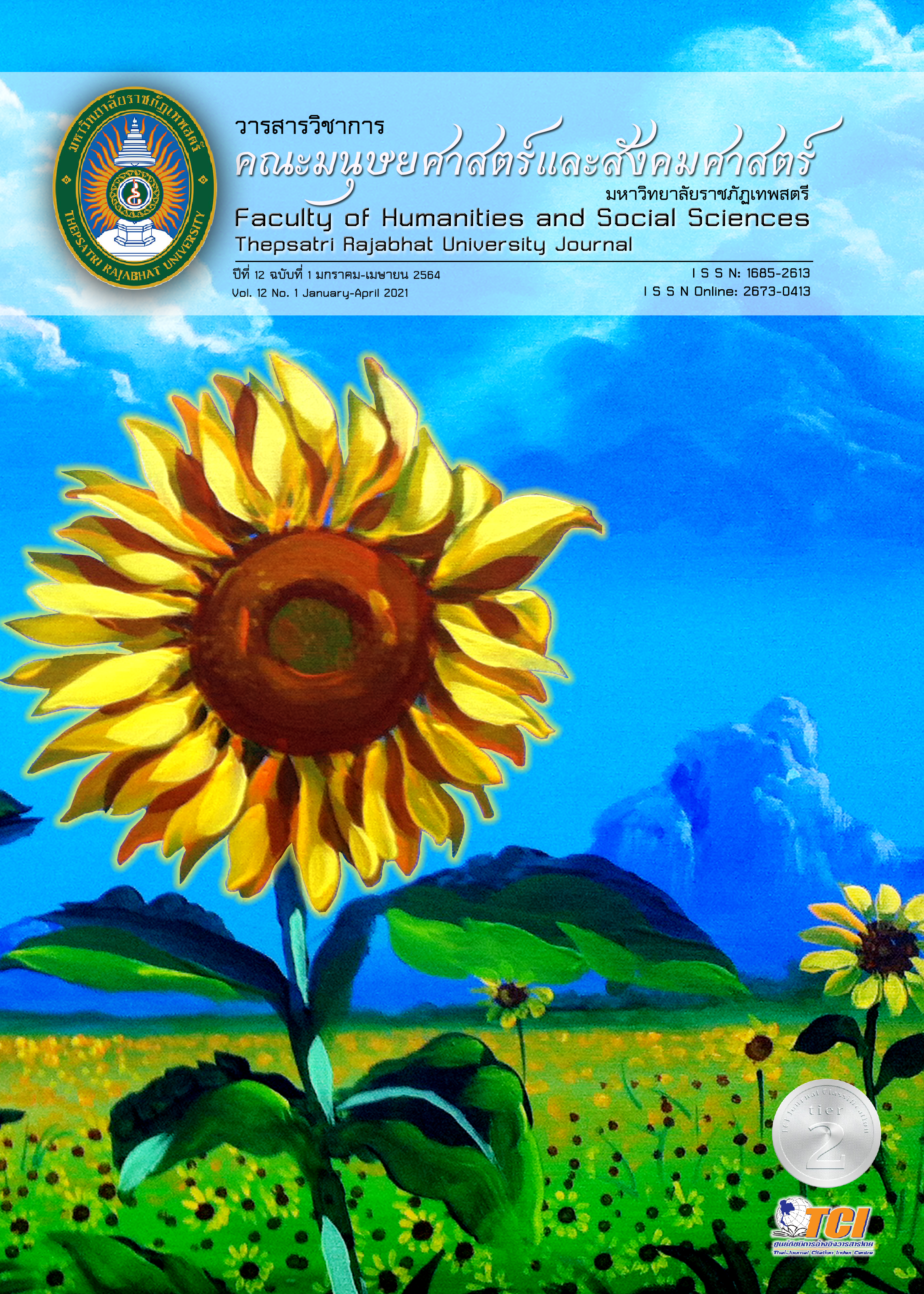Chinese New Imperialism on Thailand Border Areas in The 21ST Century Chinese New Imperialism on Thailand Border Areas in The 21ST Century
Main Article Content
Abstract
Thailand and China have been deepening their international relations since the Ping-Pong diplomacy in 1975. The relations between the two countries had started in the 13th century based on trading purposes. Ethnic Chinese in Thailand are the main group of people who support the Thai-Chinese trade today. On the other hand, Thailand also had become an ally of the United States since WWII. The relations between Thailand and the United States started with political purposes and has expanded to include benefits for trade since then. Thailand has always bought American arms, however, in recent years, Thailand has balanced its relations with the two powers in this regard by buying Chinese submarines to deepen their relations.
The military coup which had started in Thailand in May 2014, has been building stronger diplomatic relations with China under foreign direct investment between the two countries. That causes Thailand to develop a better relationship with China. This research is focused on the foreign policy of China towards Thailand and Thailand towards China. Prayut Chan-o-cha and President Xi Jinping have created stronger relations under the project of Belt and Road Initiative in Thailand, especially the Special Economic Zone in border areas and Greater Mekong Sub region co-operations. It is a win-win situation for Thailand government and Chinese entrepreneur but it is a losing game for the local Thai people.
Downloads
Article Details
The content and information presented in articles published in the Academic Journal of the Faculty of Humanities and Social Sciences, Thepsatri Rajabhat University, are solely the opinions and responsibilities of the respective authors. The editorial board of the journal neither necessarily agrees with nor assumes any responsibility for such content in any manner whatsoever.
All articles, information, content, and images published in the Academic Journal of the Faculty of Humanities and Social Sciences, Thepsatri Rajabhat University, are the copyright of the journal. Any person or organization wishing to reproduce, disseminate, or otherwise utilize all or any part thereof must obtain prior permission from the Academic Journal of the Faculty of Humanities and Social Sciences, Thepsatri Rajabhat University.
References
Barabantseva, E. (2011). Overseas Chinese, Ethnic Minorities and Nationalism: De-centering China. New York: Routledge.
Chansiri, Disaphol. (2008). The Chinese Emigres of Thailand in the Twentieth Century. New York: Cambria.
Chambers, M. R. (2005, November). The Chinese and Thai are Brothers: The Evolution of the Sino-Thai Friendship, Journal of Contemporary China, 14(5), 599-629.
Chen, Z., &Haynes, K. E. (2015). Chinese Railways in the Era of Highspeed. Bingley: Emerald.
Cheng, S. (2012). China’s International Aid Policy and its Implication for Global Governance. PCCPB Working Paper (29). Indiana: (n.p.).
Dumenil, G., &Levy, D. (2011), The Crisis of Neoliberalism. Cambridge: Harvard University Press.
Fang, Xie. (2011, June). Rethinking Tianxia. China Heritage Quarterly, 26. Retrieved January 10, 2020, from http://www.chinaheritagequarterly.org/tien-hsia.php.
Feng, Z. (2010, winter). The Tianxia System: World Order in a Chinese Utopia. Global Asia Book Review, 4(4), 108-112.
Kurlantzick, J. (2006, September). China’s Charm Offensive in Southeast Asia. Current History, 270-276.
Li, Ming Jiang, &Chong Guan Kwa. (2011). China-ASEAN Sub-Regional Cooperation Progress, Problems and Prospect. Singapore: World Scientific.
Liu, Aming. (2012). Expanding Sino-Thai Relations: Implications for transformation of regional political landscape. Paper presented at the First Thai-Chinese Strategic Research Seminar, Bangkok, August 24-26, 2012.
Liu, Hong. (2016, November). Opportunities and Anxieties for the Chinese Diaspora in Southeast Asia. Current History, 115(784), 312-318.
Lu, G. (2012). Economic Relations between China and GMS Countries: Contents, Characteristics and Implications. Paper presented at the First Thai-Chinese Strategic Research Seminar, Bangkok, August 24-26, 2012.
McCargo, D., &Ukrist Pathmanad. (2005). The Thaksinization of Thailand. Copenhagen: NIAS.
Pinkaew Laungaramsri. (2013). Commodifying Sovereignty: Special Economic Zone and the Neoliberalization of the Lao Frontier, Paper Presented at the International Workshop on Variegated Dragon: Territorialization and Civilizing Mission in Southeast Asia, June 8-9, 2013. Center for Asia-pacific Area Studies, Academia Sinica, Taipei, Taiwan.
Rutherford, J., Lazarus, K., & Kelly, S. (2008). Rethinking Investments in Natural Resources: China’s Emerging Role in the Mekong Region. Phnom Penh: Heinrich Boll Stiftung, WWF and International Institute for Sustainable Development.
Santasombat, Yot. (2015). Impact of China’s Rise on the Mekong Region. New York: Macmillan.
Tagliacozzo, E., & Chang, Wen-Chin. (2011). Chinese Circulations: Capital, Commodities and Networks in Southeast Asia. Durham: Duke University Press.
Wang, Ben Yunmo. (2015, June). China ‘Going Out’ 2.0: Dawn of a New Era for Chinese Investment Abroad. Retrieved June 11, 2015, from http://www.huffingtonpost.com/china-hands/china-going-out-20-dawn-o_b_7046790.html.
Wang, G. (2006). Tianxia and Empire: External Chinese Perspectives, Inaugural Tsai Lecture. Cambridge: Harvard University (May 4).
Xinhua. (2013, May 2). Chinese FM highlights Thailand’s Role in China-ASEAN Relations. Retrieved May 2, 2013, from http://en.people.cn/90883/8229466.html.
Zawacki, B. (2017). Thailand Shifting Ground Between the US and a Rising China. London: Zed.
Zhang, Weiwei. (2012). The China Wave: Rise of a Civilizational State. New Jersey: World Century.


